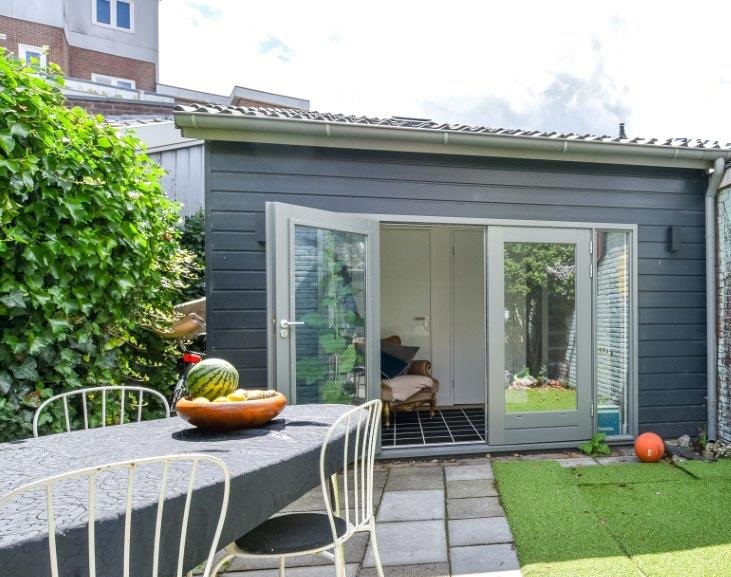What I often encounter as a real estate agent and appraiser is a shed, chalet, office or other outbuilding that has been remodeled and is being used as a residence. That is, it should be dry, well insulated, heated and clearly suitable as a living space. So to be clear, we are not talking about a cold drafty wood shed with a window and a stove put in.
In our blog on permit-free building in your garden, we already explained to you that if you build or remodel a structure in your garden it must remain “functionally subordinate” to the main building (your house itself). This means that no primary residential functions such as living room, kitchen or bedroom may be realized. A utility room, workshop, animal shelter and storage room are functionally subordinate to the function of a home.
Simply put, if you are going to build or remodel an outbuilding in your yard to work, eat or sleep in, you will need a permit to do so.
In practice, very often we see that such an outbuilding with residence functions in the garden is realized, but there is NO permit for this. Many sheds were converted, especially during the Corona era, to serve as extensions to the living/working space of the main house.
But can you count the area of such an unlicensed/illegal outbuilding in the living area when you go to sell your home?
If an outbuilding is insulated, heated, has adequate daylight access and is structurally suitable as living space, its area may count as living space. When selling, we do recommend that you clearly state in the offer text the living area of the main building (the house itself) and the living area of the outbuilding. In the ad on Funda and in the sales brochure, etc., you may add up the living area of the house + that of the outbuilding. For example, if the house has 120m2 of living space and an office in the garden is 10m2, then on Funda you can simply list 130m2 of living space.
What does “structurally suitable as an accommodation space” mean?
First, very much look at the purpose of a space. If an outbuilding or other space is overtly a storage area and can only be used that way, it is not living space.
If it is not clear, what the function of a room is, the measurement instruction prescribes the following:
“In cases of doubt, an assessment must be made by the person applying the measurement instruction.
Aspects involved are:
– Accessibility
– Daylighting
– Ventilation, heating and air conditioning
– Insulation
– Finishing level
– Shape of space
Depending on the circumstances, one or more of the above aspects may be decisive in determining that a space is structurally suitable only if
Storage space or whether it is suitable as living space.”
In practice, this means being able to get into the space easily. You should not have to jump over a ditch to get there and the entrance door should be large enough to walk through.
There must be a window of at least 0.5m2 in the room. You need to be able to heat the room adequately and also ventilate it adequately. The room really MUST be insulated. In a barn with only stone walls and no further insulation, your buttocks will freeze to your chair in winter. Thus, this is never suitable as a living space. If there is the floor of the outbuilding lying on garden tiles with sand underneath, for example, that is also not suitable as an accommodation area.
Having doubts? Then have a measurement report prepared by a company like Zien24, Object&Co or Soo media, for example. Optionally, you can also hire signed for independent brokerage advice.
Inform buyers if something is not licensed
Important advice for when selling a home with a licensed structure without a permit. Zrg that you as the seller can show that you informed the buyer prior to the purchase that (if so) an outbuilding converted/constructed into living space does not have a permit for that. You can do this, for example, by clearly stating this in the questionnaire at the time of sale.
Responsibility living area
Always keep in mind that the responsibility over the residential meters communicated when selling lies with the seller. We frequently see errors in measurement reports. Therefore, always make sure you work with an expert real estate agent who also measures everything himself.
Sources:
Communication with the Valuation Chamber
List of frequently asked questions and answers July 2020
Measuring instruction use area homes July 2019 Blog: How to calculate the living area of your home?

